|
|
| Participants |
| |
|
ABAD RODRIGUEZ Andres
|
CERN |
|
 |
Spanish Computer Scientist
working at CERN since 2007. Currently acting as Service Manager and
Technical Lead of the team which is charge for providing the build, test and
quality assurance tools for the EMI (European Middleware Initiative)
project. This project is the responsible to generate and maintain the
middleware to create the Grid where all the data coming from the LHC
accelerator is analyzed. Responsible for the creation of a pilot for a new
continuous integration system for the EMI product teams based at CERN. His
expertise cover many different fields such as project and team management,
build and testing tools, web services and dynamic web applications
developments in Java and desktop application in Python.
|
|
|
|
|
ABREU Ricardo
|
CERN |
|
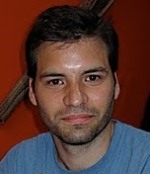 |
I am a software engineer,
currently working on the Atlas High Level Trigger (HLT) experiment, in
cooperation with the Data Acquisition (DAQ) community. I had already worked
in the HLT/DAQ already for two years, between 2008 and 2010, within the
scope of a national Portuguese scholarship. Before that, I obtained my MSc(Eng)
from the University of Lisbon, with a research project on the areas of
computer graphics, artificial intelligence, and artificial humans and
environments. In the period of 2010-2012 I worked at Nagravision, a company
in Lausanne, at the digital TV business. I now have a CERN fellowship which
started at 2012 and I am currently involved in the evolution of the original
two-stage HLT into a dynamic single-stage HLT. I also work on the design and
implementation of new HLT code to harness the computing power of current and
upcoming multi- and many-core CPUs.
|
|
|
|
|
ALVAREZ AYLLON Alejandro
|
CERN |
|
 |
I studied Computer Engineering
at the Universifty of Cadiz (Spain), and now, after being Technical Student
and Fellow at CERN, I am a staff member of the IT department.
As a
Fellow, I worked on a storage software used in the Grid, where I took a main
role in the design and development of the new core libraries, and its
HTTP/WebDAV front-end.
When I changed contract, I
moved to the "File Transfer Service", which orchestrates the copying of
files between different storage elements in the Grid. During my
participation in both projects, I have mainly worked with C, C++ and Python
on Linux platforms.
|
|
|
|
|
BANDIERAMONTE_Marilena
|
University of Catania. Italy |
|
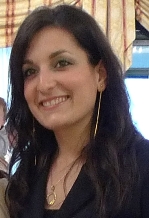 |
I obtained my MSc in Computer
Science Engineering in January 2007. After working in the Distributed
Systems research group at DIEEI of Catania University, last year I started a
PhD at Dept. of Physics and Astronomy in Catania. My research activity has
been mainly focused on meta-heuristics and scheduling algorithms in Grid
Computing. I am currently involved in a project, founded by the Italian
Ministry of Research that aims to develop a detection system able to detect
radioactive materials inside containers, to counteract the illegal transfer,
by means of muon tomography. It uses the secondary particles of cosmic rays
revealing the deflection of these particles when crossing high Z materials.
I deal specifically with track reconstruction issues and with the
visualization of 3D tomographic images. OS I use in my daily work are Linux
and OSX, sometimes Windows. C/C++, Java programming, and I have also worked
with R, ROOT and GEANT4.
|
|
|
|
|
BARROSO Vasco
|
CERN |
|
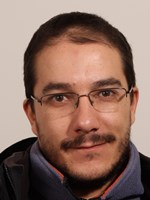 |
Since the end of 2006, I've
been a software engineer in the ALICE data acquisition team. I've been
working mostly on web-based applications such as the ALICE Electronic
Logbook (ALICE's bookkeeping facility) and the ALICE Configuration Tool
(ALICE's top-level configuration facility). I've also been contributing to
the Experiment Control System, serving as database administrator and acting
as liaison with ALICE's inner tracking detectors. In view of ALICE's planned
upgrade for Long Shutdown 2, I'm currently involved in two working groups
contributing to the design of ALICE's new software framework.
|
|
|
|
|
CHRZASZCZ Marcin |
Institute of Nuclear Physics, Polish Academy of Science, Poland |
|
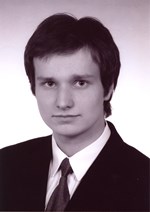 |
I am a PhD student from IFJ
Cracow. I work in the LHCb and BaBar experiments on searches for Lepton
Flavour/Number Violating Tau decays. I also study T Violation in B decays in
the LHCb. I take part in the software development and testbeams data
analysis for the SuperB experiment. I am also involved in the development of
TAUOLA MC generator, namely the implementation of new LFV decays modes and
new currents for 3 pion tau decays.
Used operating systems: Linux(Debian
and RedHat flavor), Windows. Programming languages: C, C++, FORTRAN 90/95,
PYTHON, CUDA, JAVA.
|
|
|
|
|
DARGAUD Guillaume |
CNRS, France |
|
 |
I've been working at LPSC/CNRS
doing data acquisition software on Linux for the past 7 years in cosmology
and nuclear physics: participation to the Planck satellite, the Genepi
accelerator-driven reactor, nEDM neutron dipole moment, NOY cosmic ray
detector...
Previously spent 15 years developing data acquisition systems
in atmospheric physics, in particular Antarctic missions to deploy and run
equipment.
I use and administer Linux, DSP, embedded systems with
BuildRoot; program mainly in C, bash and php; develop user interfaces with
LabWindows/CVI and some web apps.
Worked 7 years in Rome, 3 years in
Colorado, 1 year in Alaska, 3 years in Antarctica and 7 years in Grenoble.
More or less.
Avid climber, photographer and mountain-biker.
|
|
|
|
|
DKALINOWSKI Artur |
University of Warsaw, Poland |
|
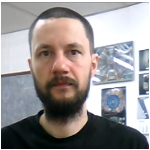 |
I am an assistant professor at
University of Warsaw, Warsaw Poland. I have received my Ph.D. in 2006.
Since then I have been working in ATLAS (past) and CMS (now) Collaborations
on preparation for data taking and lately on analysis of LHC data. Currently
my main physics interest in Higgs boson searches in tau tau decay channel.
In my work I use mainly C++ with a little of Python.
|
|
|
|
|
KHAW Kim Siang |
ETH Zurich, Switzerland |
|
 |
I am a PhD student at ETH
working on the precision physics using muon beam and muonic atom. My works
include the production of a brilliant muon beam, optimization of muonium
source such as porous silica and development of a compact muon/positron
tracker. Most of my works are done on linux platform, with C/C++ programming
heavily involved. All the data analyses and simulations are done using ROOT
and GEANT4, respectively.
|
|
|
|
|
KORTELAINEN Matti |
Helsinki Institute of Physics, Finland |
|
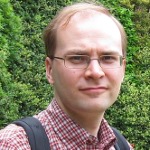 |
I work at the Helsinki
Institute of Physics for the CMS experiment. I obtained my PhD on a search
for a light charged Higgs boson from University of Helsinki in 2013. In
addition to the analysis I have contributed to development of tau triggers,
and CMS software performance analysis and improvements. Prior to my career
in HEP I had gained work experience from plasma physics and software
industry. I use actively Linux, and have experience from other Unix-like
systems and Windows. In the past years I have programmed mostly with C++,
Python, and shell scripts. I am also familiar with assembly, C, Java, Perl,
and Scheme, among others.
|
|
|
|
|
|
|
|
|
MAKATUN Dzmitry |
Nuclear Physics Institute ASCR, Czech Republic |
|
 |
Starting from 2011 I am a PhD
student at Czech Technical University. My specialization is programming and
subject of thesis is “Distributed data processing”. I carry out my research
in
Nuclear Physics Institute (CZ) in collaboration with BNL (US). The
research faces the problem of resource usage optimization by coupling the
computational, storage and network resources. The goal is to develop a
scalable, automatic, self-adjustable and flexible software environment for
data-processing.
For this work I use my skills
of: Linux, MySQL, C++, OpenMPI, Java and Python. In my free time I do sport
and photography.
|
|
|
|
|
MEUSEL René |
CERN |
|
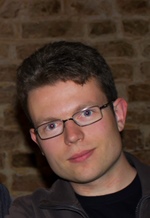 |
After being a Summer Student at CERN in 2011, I re-�joined the PH-�SFT group
as a Technical Student in November 2012. There, I am currently working on
the CernVM-� Filesystem that allows for fast and scalable distribution of
LHC experiment software in the Grid. My work is focused on development,
testing and performance optimization of CernVM-�Filesystem�s backend
storage. My work involves the utilization of current multi-�core hardware as
well as distributed approaches to speed up the staging of new LHC experiment
software releases.
Furthermore, I recently finished my
master studies in IT Systems Engineering at the Hasso-�Plattner-�Institute
in Potsdam, Germany. I have been focusing on computer graphics and
Human-�Computer-�Interaction during the course of my master studies. In
particular my thesis was dealing with human tracking on interactive
multi-touch floors.
|
|
|
|
|
NOWAK Friederike |
DESY, Germany |
|
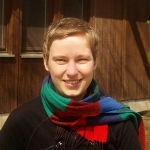 |
I studied physics at the
university of Hamburg, receiving my Phd in 2012. Besides performing a search
for Supersymmetry within the CMS collaboration, I also was involved in
developing modules for the HappyFace Project, a meta monitoring tool for
computing sites. In October 2012, I moved to the IT department of DESY,
becoming the contact person for ATLAS within the IT group. My main tasks
include grid cluster and dCache operations, and I am also involved in the
german National Analysis Facility. My preferred progamming languages are
Python and C++, but I have also used Bash, Perl, and Php before.
|
|
|
|
|
SIZUN Patrick |
CEA Saclay, France |
|
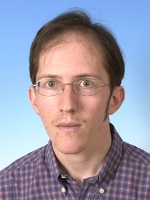 |
After a master degree in
science and engineering and a PhD in Astrophysics, I have been working at
CEA/IRFU in Saclay (France) as a software engineer for six years.
Working
mostly under Linux, Mac OS X and VxWorks, I contribute to the software
developped for the experiments (in Astrophysics, Particle or Nuclear
Physics) IRFU is involved in,
from an event display for the ATLAS
spectrometer (C++, Qt, Fortran), or software utilities for the calibration
of CTA mirrors (Python, ROOT) to a data center infrastructure for the SVOM
mission (Java, EJB, C++) or a monte-carlo model of the ECLAIRs telescope
(Geant4).
I am currently working on a generic run control and data
acquisition system for time projection chambers (C++, ICE).
|
|
|
|
|
STELLA_Sabrina |
University of Trieste, Italy |
|
 |
Presently, I am a post-doc at
the Physics Department of the University of Trieste.
I completed my PhD
in Physics in 2012, at the University of Pavia, working on Boron Neutron
Capture Therapy. There, I mainly dealt with the measurement of 10B in
biological samples and with the design of a prompt gamma neutron activation
analysis facility, using a Monte Carlo N-Particle code.
Now I am working
on the computational aspects of a biophysical model of tumour growth. My
work is aimed at bringing about an important improvement in code modularity
and flexibility, and increasing the program execution speed.
The
operating system mainly used is Mac OSX, the IDE is XCode, the language is
C++, with the addition of OpenMP, CUDA, and ancillary software in
Mathematica. I am also familiar with Windows and Linux OS and I have some
experience with the ROOT framework, SQL language, HTML and css.
|
|
|
|
|
TELESCA Adriana |
CERN |
|
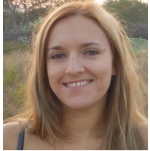 |
I come from Lecce, in the
south of Italy, and I am a telecommunication and electronics engineer
working mainly in software development. I have been working at CERN as a
computing engineer in the Data Acquisition team (DAQ) of the ALICE
experiment for the last 4 years. I first joined CERN as a Marie Curie fellow
in the ACEOLE project and I am currently a CERN staff member. I am in charge
of the system monitoring of the DAQ machines and I collaborate with a
colleague in the development of the Data Quality Monitoring framework. I am
also participating in several R&D projects for the ALICE experiment upgrade
during the long shutdown 2.
|
|
|
|
WYSZYńSKI Grzegorz |
Jagiellonian University, Poland |
|
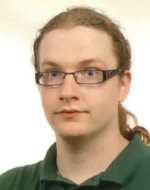 |
I graduated from Jagiellonian
University with Master Degree in 2010. My thesis' topic was the construction
and operation of Multiwire Drift Chamber.
The same year I started
International PhD Studies in Nuclear Physics at the same University. My
current work is related with nEDM experiment at Paul Scherrer Institute. I
am responsible of the design of the active magnetic shielding for next stage
of experiment.
Currently I am staying at ETH Zurich, working on both
construction and simulation of this system.
|
|
|
|
|
WYILDIZ Cenk |
Bogazici University, Tutkey |
|
 |
I have studied Physics and
received my Master of Science in mathematical physics from Bogazici
University in 2008. Since 2009, I've been doing PhD in CAST Experiment at
CERN on axion search using x-ray micromegas detectors. During this time I
worked on various experimental areas and used programming for detector
analysis, simulation, web programming, plotting and data analysis. I almost
only use GNU/Linux for private and work purposes. I program mostly in
python(and I love it!), and I program in C++ for CPU intensive jobs like
detector/physics analysis. I have experience in web programming using
php/HTML and web2py framework. I'm also familiar with bash programming and
labview.
|
|
|
|
